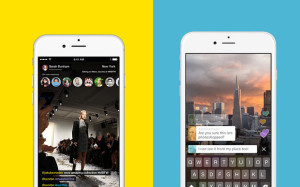Periscope Versus Meerkat
Live streaming is becoming increasingly popular as the digital world seeks to connect users to together to everything from sporting events to concerts. Periscope and Meerkat are currently the top platforms for this and their main function is the same, to stream video from the phone’s camera to the public. They slightly differ in style, and there are benefits and drawbacks to each.
Meerkat and Periscope are currently the two iOS rivals for good reason. Meerkat was the first mainstream company to enter the world of live streaming, though Periscope came out not long after. However, Periscope was acquired by Twitter for a reported $100 million and is currently more complete and intuitive than Meerkat. Meerkat combats this by stating they have plans to build itself as a separate social network outside of Twitter or other social media.
In the past, Meerkat has been the forefront of updating and differentiating its service. As it did start later, Periscope often follows right after. Periscope is currently ahead in users as it does draw more attention through Twitter and other social media apps integrated alongside.
One of the largest differences of Meerkat and Periscope is that Periscope allows the user to have access to the live stream for 24 hours after it ends. Meerkat, on the other hand, deletes the stream immediately. Both can have its benefits and drawbacks, and will highly depend on what the user’s specific preferences are and sometimes other things such as privacy concern can come into play.
Meerkat works through Twitter so that once a video is broadcasted, a tweet will be linked to the timeline, and all comments will be through Twitter. The benefits of this is that it does bring attention to your posting. However, equally so, the drawback is that as it continues to post every comment over time, it is easy to ignore all the links.
Even though it is owned by Twitter, Periscope also works as a separate mobile app. Periscope minimises the amount of exposure on Twitter as it allows you to opt for a live-streaming experience only to those who follow on the mobile app. You have the choice of receiving push notifications for people you wish to follow.
Meerkat is known for its simplicity, however, it is difficult to learn how to use and there can be a learning curve. A main issue is that users will not expect to go live immediately, and both viewers and streamers will be confused with the usability and experience. Periscope has a cleaner design, making it easier for the users, giving more time to decide on the name and frame before beginning the broadcast.
Periscope is continuously growing as live streams have doubled on Twitter after an Android app launched. It has also gained a larger social presence than Meerkat, and utilizes other social networks to popularize it. As social live streaming is still new and not yet popular as there is no clear business model attached to it, having a larger social media presence is important for either company to succeed.
By Chris Kyriacou
Join the conversation #TheFutureOfMarketing

